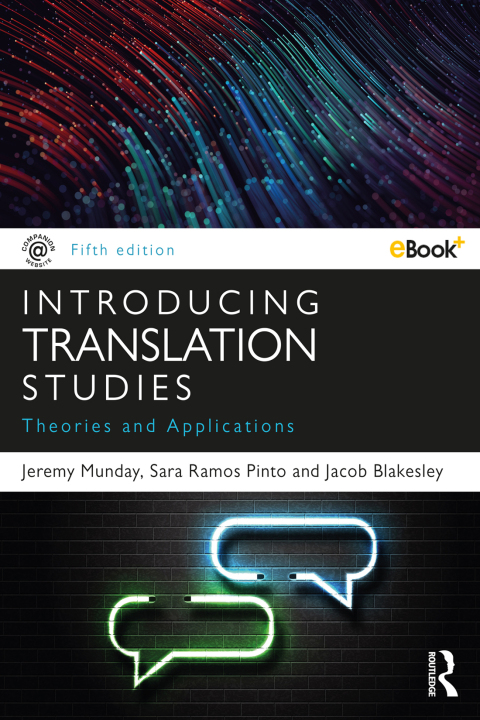Description
Efnisyfirlit
- Cover
- Half-Title
- Title
- Endorsements
- Copyright
- Dedication
- Contents
- A visual tour of Introducing Translation Studies
- List of figures and tables
- Acknowledgements
- List of abbreviations
- Introduction
- 1 Main issues of translation studies
- 1.0 Introduction
- 1.1 The concept of translation
- 1.2 What is translation studies?
- 1.3 An early history of the discipline
- 1.4 The Holmes/Toury ‘map’
- 1.5 Developments since Holmes
- 1.6 The van Doorslaer ‘map’
- 1.7 Discipline, interdiscipline or multidiscipline?
- 2 The basic concepts of early translation theory
- 2.0 Introduction
- 2.1 ‘Word-for-word’ or ‘sense-for-sense’?
- 2.2 Early Chinese and Arabic discourse on translation
- 2.3 Humanism and the Protestant Reformation
- 2.4 Fidelity, spirit and truth
- 2.5 Early attempts at systematic translation theory: Dryden, Dolet, Tytler and Yán Fù
- 2.6 Schleiermacher and the valorization of the foreign
- 2.7 Towards contemporary translation theory
- 3 Equivalence and equivalent effect
- 3.0 Introduction
- 3.1 Roman Jakobson: the nature of linguistic meaning and equivalence
- 3.2 Nida and ‘the science of translating’
- 3.3 Newmark: semantic and communicative translation
- 3.4 Koller: equivalence relations
- 3.5 Later developments in equivalence
- 4 Studying translation product and process
- 4.0 Introduction
- 4.1 Vinay and Darbelnet’s model
- 4.2 Catford and translation ‘shifts’
- 4.3 Option, markedness and stylistic shifts in translation
- 4.4 Corpus-based translation studies
- 4.5 The cognitive process of translation
- 4.6 Ways of investigating cognitive processing
- 5 Functional theories of translation
- 5.0 Introduction
- 5.1 Text type
- 5.2 Translatorial action
- 5.3 Skopos theory
- 5.4 Translation-oriented text analysis
- 6 Discourse and Register analysis approaches
- 6.0 Introduction
- 6.1 The Hallidayan model of language and discourse
- 6.2 House’s model of translation quality assessment
- 6.3 Baker’s text and pragmatic level analysis: a coursebook for translators
- 6.4 Hatim and Mason: the levels of context and discourse
- 6.5 Criticisms of discourse and Register analysis approaches to translation
- 7 Systems theories
- 7.0 Introduction
- 7.1 Polysystem theory
- 7.2 Toury and descriptive translation studies
- 7.3 Chesterman’s translation norms
- 7.4 Other models of descriptive translation studies: Lambert and van Gorp and the Manipulation School
- 8 Cultural and ideological turns
- 8.0 Introduction
- 8.1 Translation as rewriting
- 8.2 Translation and gender
- 8.3 Postcolonial translation theory
- 8.4 The ideologies of the theorists
- 8.5 Translation, ideology and power in other contexts
- 9 The role of the translator: Visibility, ethics and sociology
- 9.0 Introduction
- 9.1 The cultural and political agenda of translation
- 9.2 The position and positionality of the translator
- 9.3 The sociology and historiography of translation
- 9.4 The power network of the translation industry
- 9.5 The reception and reviewing of translations
- 10 Philosophical approaches to translation
- 10.0 Introduction
- 10.1 Steiner’s hermeneutic motion
- 10.2 Ezra Pound and the energy of language
- 10.3 The task of the translator: Walter Benjamin
- 10.4 Deconstruction
- 11 New directions from audiovisual translation and digital technology
- 11.0 Introduction
- 11.1 Audiovisual translation
- 11.2 Localization, globalization and transcreation
- 12 Research and commentary projects
- 12.0 Introduction
- 12.1 Consilience in translation studies
- 12.2 Translation commentaries
- 12.3 Research projects in translation studies
- Bibliography
- Index





